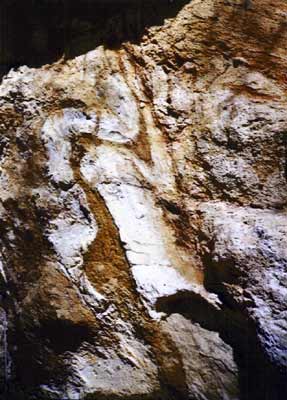 |
||||
 |
The Appalachian Mountain range, in eastern North America, stretches from Alabama to Nova Scotia. It was formed in several different orogenic (mountain-building) events as the African and European tectonic plates crashed into the North American plate in the formation of the supercontinent Pangaea. Around 543 million years ago (mya), the North American plate had offshore sediments in a continental shelf made up chiefly of sand and limestone. An undersea subduction zone zone formed as the African plate moved closer, creating an island arc. As plate movement brought this island arc closer to shore, the sediments were squeezed between the continent and the volcanic islands. By 440 mya, the island arc had docked against the continent, pushing the sedimentary material onto the continent itself into a mountain range as high as today's Himalayas. On its western side (present day Tennessee & Kentucky up through Vermont), sediment was folded and metamorphosed. The eastern side (which includes present day South Carolina) is made of the metamorphosed volcanic rock from the island arc. |
This
is my Field Journal from The
University of South Dakota 2004 ESCI 396 Spring Field Trip:
Southern Appalachian Geology. © 2004 Charlotte S. Marek
Southern Appalachian Geology. © 2004 Charlotte S. Marek